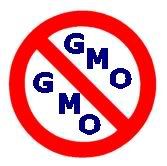A One-Week Cleansing and Detoxification Program
© Janet Zand L. Ac.
In both Chinese and Naturopathic medicine, the spring season is the optimal time of year for cleansing and detoxification. But remember, cleansing can be beneficial during all seasons of the year. An effective cleansing program targets two important organ systems -- the colon (for elimination) and the liver (for detoxification).
The herbs Psyllium and Cascara Sagrada are two of the most widely used remedies in colon cleansing programs. Psyllium (Plantago ovata seed and husk) is categorized as a bulk laxative -- its mucilaginous component acts as a bulking agent that cleanses the intestines. In addition, Psyllium has other important health benefits -- studies show that it reduces low density lipoproteins (the "bad" cholesterol) and regulates blood sugar levels. Cascara Sagrada (Rhamnus purshiana bark) has been used for centuries to treat occasional constipation -- its active components stimulate the intestinal lining and relieve a sluggish colon. The combination of both Psyllium (as a bulking agent) and Cascara (as a stimulant laxative) is essential for an effective colon cleansing program.
Detoxification is best supported with herbs that target the liver, which is responsible for many of the important "detox" functions in the body. And Milk Thistle is the place to start. Milk Thistle (Silybum marianum seed) is used to detoxify the liver and to protect it from harmful toxins. Studies show that this beneficial herb not only protects the liver but also promotes the regeneration of healthy new liver cells. Other herbs traditionally used to support the liver include Dandelion (Taraxacum officinale root), Yellow Dock (Rumex crispus root), and the Chinese herb Bupleurum (Radix Bupleurum).
Cleansing and detoxification encourage the body's natural internal processes which eliminate toxins from our system so that we can feel our best. In any cleansing program, diet and exercise should be emphasized in order to ensure optimal results! The following is a simple easy-to-follow program -- try it for one week, and see how you feel.
Diet and Exercise for a One-Week Cleansing Program
Fasting may be a useful way to detox, but it is difficult, especially for those who work and have families to care for. A cleansing diet, on the other hand, can be very beneficial and creates less stress on the body as it is purified. Cleansing foods include cooked whole grains, steamed vegetables, raw vegetable salads, fruit, and juices. Avoid sauces, dressings, butter, and oil. However, you may use lemon juice as a dressing for salads and vegetables. You should also limit your intake of flour or bread products. Whole grain wheat-free bread, wheat-free crackers, and rice cakes are acceptable.
And remember, drink lots of pure spring water-- at least 8 glasses a day!
Exercise is also a very important part of any cleansing program. This means exercising to the point of perspiration. The skin is the largest organ of elimination in the body, and sweating eliminates toxins. You may also consider using a loofa scrub to further stimulate elimination through the skin. Jogging, brisk walking, cycling, and swimming are all excellent forms of exercise to supplement this program.
For complete information on detoxification regarding this article: http://www. healthy. net/scr/article. asp?Id=912

Other helpful sites:
http://www. panda. org/about_wwf/what_we_do/policy/toxics/news/index. cfm?uNewsID=11562
http://wordpress. com/tag/detoxify/
http://leas. ca/
http://wellnesshealth. wholefoodfarmacy. com/2005/video_library. asp?mv=unhlthydiag. flv
http://www. shirleys-wellness-cafe. com/toxic-cosmetics. htm














 If you've been following author Michael Pollan's simple eating philosophy—
If you've been following author Michael Pollan's simple eating philosophy—
